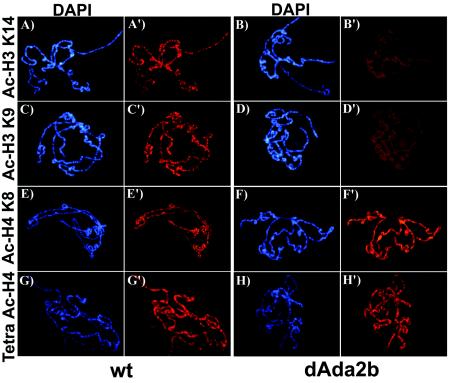FIG. 4.
Histone H3 acetylation on salivary gland polytene chromosomes is reduced in dAda2b mutants. Polytene chromosomes were prepared from wild-type (wt) and dAda2b homozygous mutant third-instar larval salivary glands, stained with antibodies directed against different acetylated forms of histone H3 or H4, and counterstained with DAPI. For wt (A and A′) and dAda2b mutant (B and B′) chromosomes incubated with an anti-acetylated histone H3 lysine 14 antibody, the staining intensity was greatly diminished on dAda2b mutant chromosomes compared to wt. A reduction in staining intensity was also found on dAda2b mutant chromosomes incubated with anti-acetylated H3 K9 (D and D′) compared to the wt (C and C′). By contrast, we observed similar staining intensities for wt and dAda2b mutant chromosomes incubated with anti-acetylated H4 K8 (E to F′) or a tetra-acetylated H4 antibody (G to H′).

